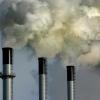
In a new addition to the Atlas of Demography – an interactive tool by the European Commission’s Joint Research Centre (JRC) – IIASA researchers (as part of the SPARCCLE project) have released an in-depth analysis of regional variations in socioeconomic vulnerability across the EU, highlighting how demographic, health, and socioeconomic factors shape the capacity of populations to withstand climate extremes.
Focusing on vulnerability indicators such as age, health, economic status, and housing conditions, the analysis reveals that vulnerability levels differ significantly depending on the degree of urbanization. Urban and rural areas offer varying levels of protection, which depend on the country and the specific type of vulnerability considered.
“Rural areas, particularly in Eastern and Southern Europe, are expected to be hit hardest by climate change. With older populations, higher rates of chronic illness, and lower income levels, these regions face greater risks from immediate climate events like floods and heatwaves, which also weaken their long-term resilience,” says Anne Goujon, socioeconomics lead in the Horizon Europe-funded SPARCCLE project and Program Director of the IIASA Population and Just Societies Program.
In regions with significant aging populations, the combination of physical frailty and socioeconomic challenges exacerbates vulnerability, expected to make adaption efforts more difficult. Additionally, areas with poor health indicators, particularly those with high rates of chronic diseases, are less equipped to respond effectively to climate hazards, while low-income households face significant barriers to recovering from extreme climate events.
The findings underscore the need for targeted policies that address the specific vulnerabilities of different demographic groups and regions, ensuring that protective measures are appropriately tailored to the unique needs of each community. Addressing these vulnerabilities requires targeted interventions that consider the unique demographic, health, and economic contexts of each region, thereby ensuring that the most at-risk populations are supported in building resilience against the escalating threats of climate change.
About the Atlas of Demography
The Atlas of Demography is an interactive tool developed by the European Commission’s Joint Research Centre (JRC) that enables policymakers and citizens to observe, monitor, and anticipate demographic challenges. Together with the green and digital transitions, demographic change is the third transformation shaping the future of Europe. A good understanding of how demographic change and the local, regional, and national realities interact is key to tailor EU policies to the changing conditions on the ground.
About the SPARCCLE project
Addressing the risks of climate change within the next decade has become extremely urgent and is an essential part of longer term sustainable development. Climate change brings many highly uncertain impacts onto society and economy, and its risks, incorporating vulnerability, require more comprehensive assessments.
SPARCCLE will establish new methodological frameworks to link knowledge across disciplines from research communities working on climate impacts and risk in Europe. Bottom-up assessments of multidimensional climate vulnerabilities, risks, damages, and adaptation will be combined with top-down integrated assessment frameworks (IAFs) and leading multi-sectoral macro-economic models.
This will deliver new, cutting-edge European capabilities to identify the characteristics of both sectoral and systems-level transformations required for climate-resilient and just development that reduces socioeconomic risks for Europe related to both sudden extreme events and slow onset processes.
News

12 September 2024
Urgent action needed to ensure a safe and just planet for all

16 August 2024
Nitrogen interventions as a key to better health and robust ecosystems

14 August 2024

